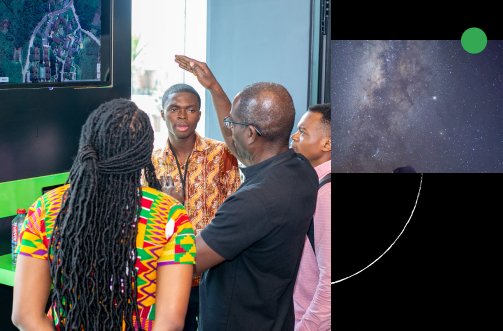
Arbaaz Muslim
Arbaaz is a researcher on the Health AI team at Google, where he is currently working on a foundation model that captures population dynamics. He earned his MS in Electrical Engineering and Computer Science from UC Berkeley in 2023, with a thesis focusing on protein language modeling. In industry, he has worked at various health-tech startups, designing and implementing data infrastructure to incorporate patient data into machine learning models. In academia, he contributed to research projects on neural tracking and neural receptive field prediction. Arbaaz's interests lie in leveraging machine learning and data engineering to improve healthcare outcomes.
Research Areas
Authored Publications
Sort By
Earth AI: Unlocking Geospatial Insights with Foundation Models and Cross-Modal Reasoning
Aaron Bell
Aviad Barzilai
Roy Lee
Gia Jung
Charles Elliott
Adam Boulanger
Amr Helmy
Jacob Bien
Ruth Alcantara
Nadav Sherman
Hassler Thurston
Yotam Gigi
Bolous Jaber
Vered Silverman
Luke Barrington
Tim Thelin
Elad Aharoni
Kartik Hegde
Yuval Carny
Shravya Shetty
Yehonathan Refael
Stone Jiang
David Schottlander
Juliet Rothenberg
Luc Houriez
Yochai Blau
Joydeep Paul
Yang Chen
Yael Maguire
Aviv Slobodkin
Shlomi Pasternak
Alex Ottenwess
Jamie McPike
Per Bjornsson
Natalie Williams
Reuven Sayag
Thomas Turnbull
Ali Ahmadalipour
David Andre
Amit Aides
Ean Phing VanLee
Niv Efron
Monica Bharel
arXiv (preprint 2025), arXiv, arXiv:2510.18318
https://doi.org/10.48550/arXiv.2510.18318
(2025)
Preview abstract
Geospatial data offers immense potential for understanding our planet. However, the sheer volume and diversity of this data along with its varied resolutions, timescales, and sparsity pose significant challenges for thorough analysis and interpretation. The emergence of Foundation Models (FMs) and Large Language Models (LLMs) offers an unprecedented opportunity to tackle some of this complexity, unlocking novel and profound insights into our planet.
This paper introduces a comprehensive approach to developing Earth AI solutions, built upon foundation models across three key domains—Planet-scale Imagery, Population, and Environment—and an intelligent Gemini-powered reasoning engine. We present rigorous benchmarks showcasing the power and novel capabilities of our foundation models and validate that they provide complementary value to improve geospatial inference. We show that the synergy between these models unlocks superior predictive capabilities. To handle complex, multi-step queries, we developed a Gemini-powered agent that jointly reasons over our multiple foundation models along with large geospatial data sources and tools to unlock novel geospatial insights. On a new benchmark of real-world crisis scenarios, our agent demonstrates the ability to deliver critical and timely insights, effectively bridging the gap between raw geospatial data and actionable understanding.
View details
General Geospatial Inference with a Population Dynamics Foundation Model
Chaitanya Kamath
Prithul Sarker
Joydeep Paul
Yael Mayer
Sheila de Guia
Jamie McPike
Adam Boulanger
David Schottlander
Yao Xiao
Manjit Chakravarthy Manukonda
Monica Bharel
Von Nguyen
Luke Barrington
Niv Efron
Krish Eswaran
Shravya Shetty
arXiv (2024)
Preview abstract
Supporting the health and well-being of dynamic populations around the world requires governmental agencies, organizations, and researchers to understand and reason over complex relationships between human behavior and local contexts. This support includes identifying populations at elevated risk and gauging where to target limited aid resources. Traditional approaches to these classes of problems often entail developing manually curated, task-specific features and models to represent human behavior and the natural and built environment, which can be challenging to adapt to new, or even related tasks. To address this, we introduce the Population Dynamics Foundation Model (PDFM), which aims to capture the relationships between diverse data modalities and is applicable to a broad range of geospatial tasks. We first construct a geo-indexed dataset for postal codes and counties across the United States, capturing rich aggregated information on human behavior from maps, busyness, and aggregated search trends, and environmental factors such as weather and air quality. We then model this data and the complex relationships between locations using a graph neural network, producing embeddings that can be adapted to a wide range of downstream tasks using relatively simple models. We evaluate the effectiveness of our approach by benchmarking it on 27 downstream tasks spanning three distinct domains: health indicators, socioeconomic factors, and environmental measurements. The approach achieves state-of-the-art performance on geospatial interpolation across all tasks, surpassing existing satellite and geotagged image based location encoders. In addition, it achieves state-of-the-art performance in extrapolation and super-resolution for 25 of the 27 tasks. We also show that the PDFM can be combined with a state-of-the-art forecasting foundation model, TimesFM, to predict unemployment and poverty, achieving performance that surpasses fully supervised forecasting. The full set of embeddings and sample code are publicly available for researchers. In conclusion, we have demonstrated a general purpose approach to geospatial modeling tasks critical to understanding population dynamics by leveraging a rich set of complementary globally available datasets that can be readily adapted to previously unseen machine learning tasks.
View details
Community search signatures as foundation features for human-centered geospatial modeling
Chaitanya Kamath
Mohit Agarwal
David Schottlander
Shailesh Bavadekar
Niv Efron
Shravya Shetty
ICML 2024 Workshop on Data-Centric Machine Learning Research
Preview abstract
Aggregated relative search frequencies offer a unique composite signal reflecting people's habits, concerns, interests, intents, and general information needs, which are not found in other readily available datasets. Temporal search trends have been successfully used to perform nowcasting across a variety of domains such as infectious diseases, unemployment rates, and retail sales. However, most existing applications require curating specialized datasets of individual keywords, queries, or query clusters, and the search data need to be temporally aligned with the outcome variable of interest. We propose a novel approach for generating an aggregated and anonymized representation of search interest as foundation features at the community level for geospatial modeling. We benchmark these features using spatial datasets across multiple domains. In regions with a population greater than 3000 that cover over 95% of the contiguous US population, our models achieve an average R-squared score of 0.74 across 21 health variables, and 0.80 across 6 demographic and environmental variables. Our results demonstrate that these search features can be used for spatial predictions without strict temporal alignment, and that the resulting models outperform spatial interpolation and state of the art methods using satellite imagery features.
View details
